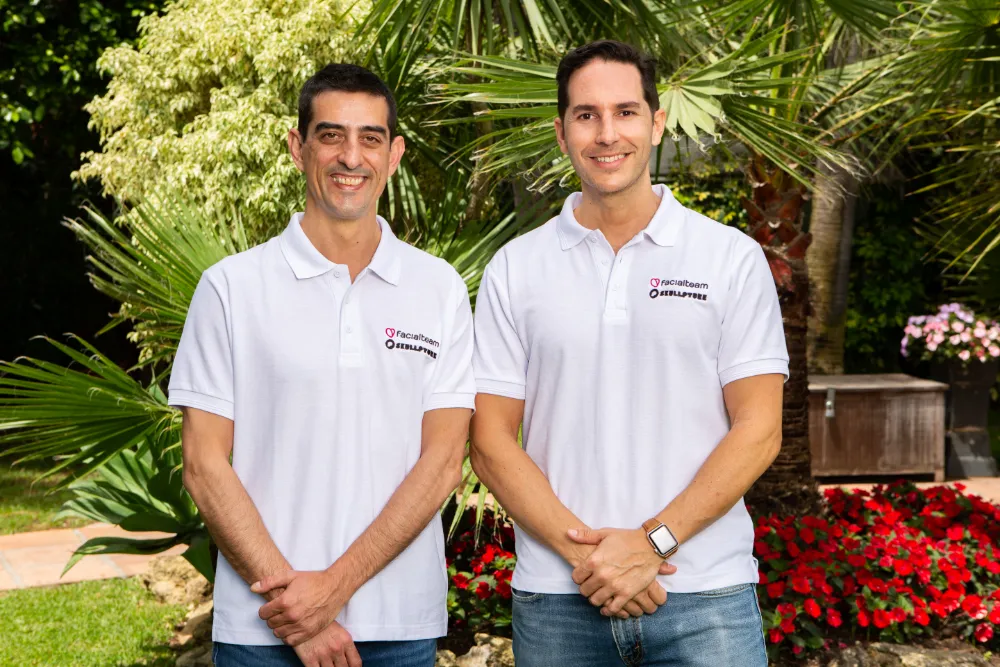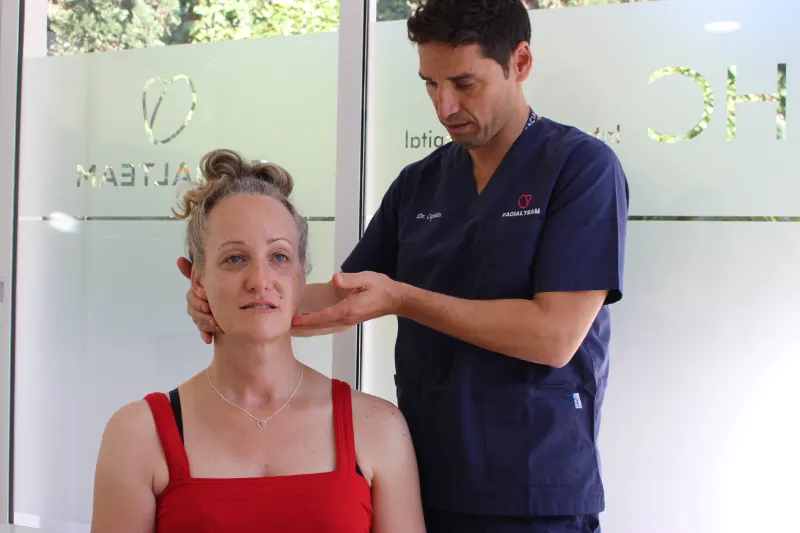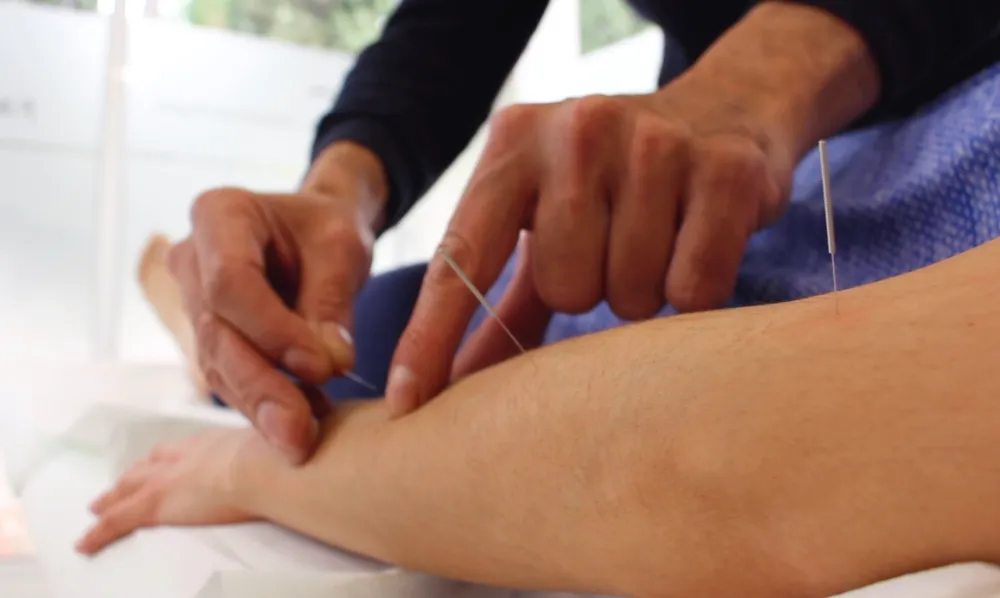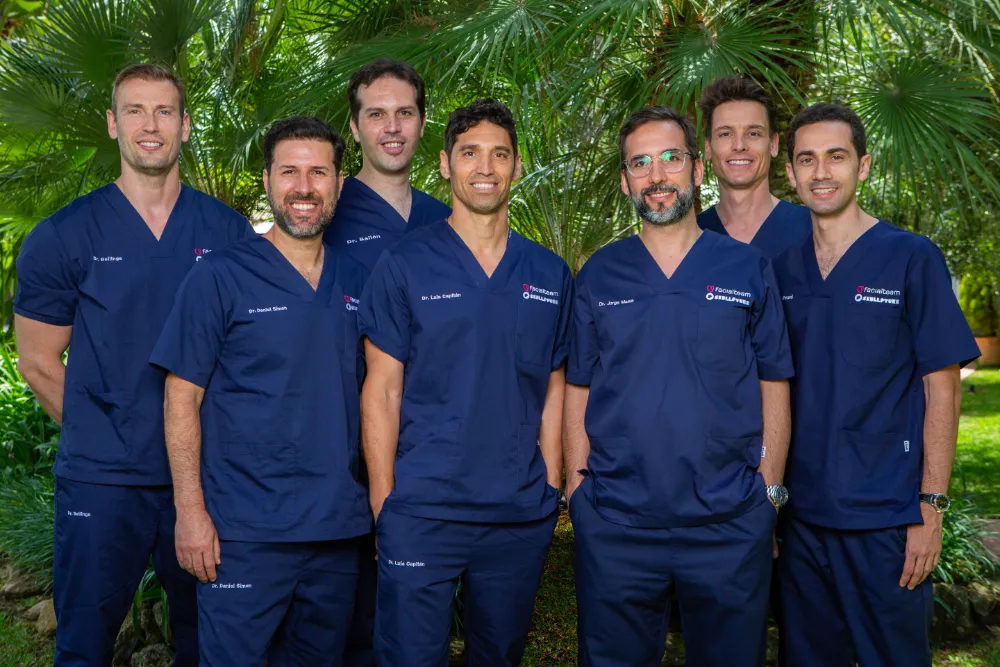Dealing with Scars after FFS Surgery
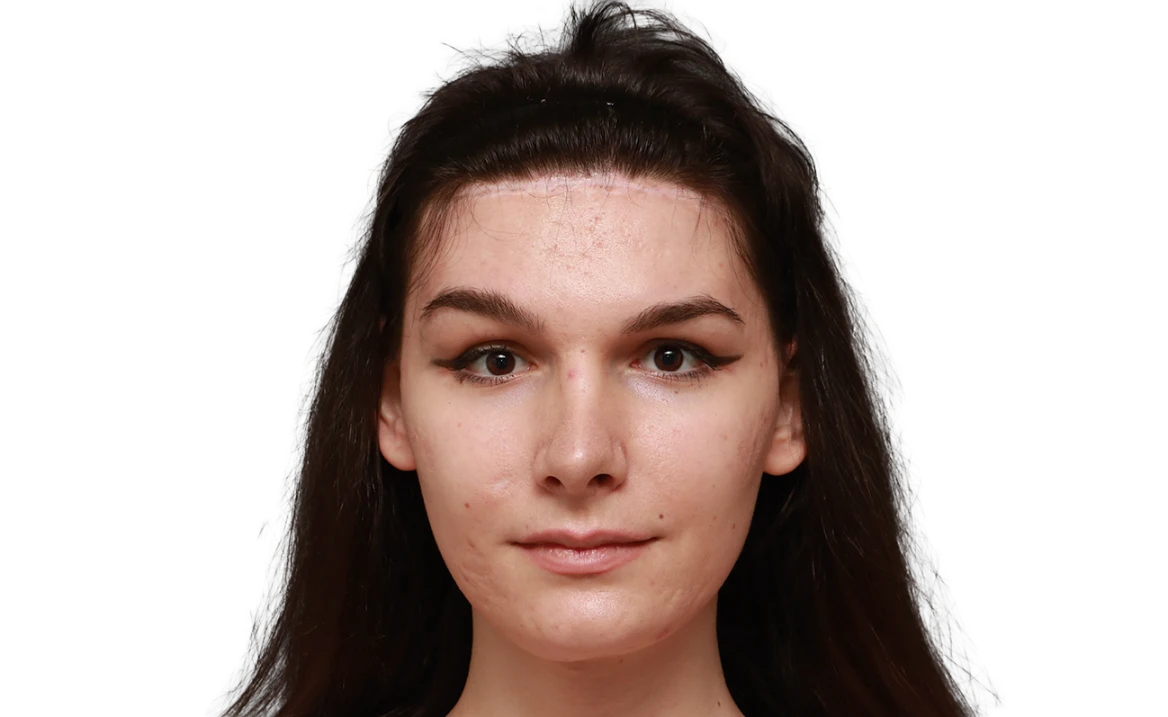
One of the biggest worries that prospective patients ask about facial feminization surgery is, “Will I have visible scars after FFS?”
The face is the most visible part of the body so it’s important to have confidence in the reconstructive and plastic surgeons to deliver the best possible results without scars after facial gender surgery.
FFS surgery can be relatively invasive, as it involves modifying the facial bones through incisions in the surrounding soft tissue. Facialteam’s philosophy seeks to reduce the invasive aspects with three pillars to ensure:
- Natural results
- Maintaining your core identity
- Invisible or hidden facial feminization scars after FFS
These foundations form the basis of our procedures.
3 Types of Facial Feminization Scars
Our innovative surgical approach gives you confidence in knowing that there won’t be any unsightly scars. It’s not logical to invest in your facial features to create a more feminine look, go through the swelling and bruising phases, only to be left with unwanted scars.
For the sake of explanation, we’ll say there are three different types of scars. At Facialteam we always opt for either hidden or invisible ones.
- Visible FFS Scars
Scars that are easily noticeable from the outside and can’t be easily hidden. - Hidden FFS Scars
Scars that are not easily visible as they are hidden in a natural manner. - Invisible FFS Scars
Scars that are not visible from the exterior.
Visible FFS Scars
Nobody wants to be left with a noticeable scar after surgery that can’t be easily hidden. Nowadays, people having plastic surgery want a natural, unoperated look. Unfortunately, some conventional techniques involve leaving visible FFS scars.
For example, hairline lowering, and scalp advancement procedures both involve making incisions directly at the hairline. Aside from not adequately correcting M-shaped male to female hairlines, the resulting scar may be visible after healing.
Being placed at the top of the forehead can make the scar more noticeable, which is why we avoid these types of incisions. Hairline incisions are only employed as a last resort when it is the only adequate solution, but this is rare.
Hidden FFS Scars
We always aim for scars that are invisible or easily hidden. We have effective ways of achieving this, such as making an incision behind the hairline, or coronal incision, to access the brow bossing so that it is later obscured by your hair.
In the case of a tracheal shave or Adam’s apple reduction, we make a precise microincision in a crease under the chin or higher up the neck.
The lip lift scar is also intentionally placed in a natural crease well above the upper lip (under the nostrils) to minimize its visibility.
Invisible FFS Scars
Invisible FFS scars are impossible to notice from outside the body. This can be achieved, for example, when an incision is made from the inside of the mouth, producing no external scar.
This should be the case in jaw reduction and chin feminization procedures which use intraoral incisions that are within the mouth cavity.
Scars after facial feminization procedures
In this section you can learn about the kind of post operative FFS scars that any prospective patient can expect after healing from each surgical procedure.
Scars after forehead reduction
Forehead reduction surgery involves brow bone reduction and is usually combined with forehead contouring. An incision is made in the crown, so that it is hidden.
Facialteam’s FOREContour® method is based on personalized evaluations, providing the best in both preoperative and postoperative care and is the base to obtain natural surgical outcomes.
Scars after jaw or chin reduction
Our JAWContour® method for jaw reductions and chin recontouring offers minimally invasive surgery, with advanced precision.
By making incisions from inside the mouth, there are no visible scars on the skin surface after jaw or chin reduction surgery. Added benefits include the intraoral tissue or “mucosa” being kept intact, mental nerve-endings are better protected, and issues such as chin detachment or gum recession are avoided.
Scars after a hair transplant
With Follicular Unit Strip Surgery (FUSS), we take hair follicles from a dense strip of the scalp. The resulting scar is hidden by surrounding hair.
An alternate technique, Follicular Unit Extraction (FUE) is a longer process that involves removing random hair follicles individually, so no large area with scarring is left behind.
Nose surgery scars
Ultrasonic instruments for sculpting nasal structures, known as Piezosurgery®, is an example of our level of quality. Similarly, by making an incision at the base of the septum, the scar is more likely to remain hidden after healing from nose surgery.
Our REVONose® method provides maximum security and the most predictable results using the latest technology.
Tracheal Shave Scars
We use a procedure known as a chondrolaryngoplasty to make an incision in a low-visibility skin crease underneath the chin. This hides any possible scarring.
Avoiding making incisions on the front surface of the neck is fundamental, as the scar can stick to the cartilage beneath your skin. This adhesion could cause the tissues to move up and down when you swallow. Our advanced TContour® technique avoids this undesirable result.
Scar Care after FFS Surgery
After surgery, it is important to practice good skin care of the surgical incisions to minimize recovery time. This will allow FFS scars to heal and gradually fade.
Here are some tips and notes of what to expect:
General Scar Care
- It’s very important not to pick at or remove any scabs. Scars will fade over time, passing through a maturation process that takes, literally, years.
- Keep any sterile strips covering wounds or bandages completely dry and avoid touching them.
- Carefully clean incisions daily with saline solution or soap and water. Be sure to dry the area gently afterwards.
- You may experience light bleeding in or around incision areas. This is nothing to worry about. However, if you experience excessive bleeding, or find any large or hard collections of blood, please contact our office as soon as possible.
- After 24 hours, manual lymphatic drainage is administered to aid tissue recovery.
- You can apply light makeup gently to your face 1 week after surgery.
- 1 week after suture removal start using Rosa Mosqueta / Rosehip oil. Apply the oil each morning and evening with a gentle massage. Keep using the oil for up to 3-12 months.
- 2 weeks after suture removal start using Dermatix or similar silicone-based scar reduction gel. Alternate the use of rosehip oil and scar gel. Apply scar gel in the mornings and rosehip oil in the evenings. Keep using the scar gel for up to 3-12 months to help the scar become as unnoticeable as possible over time.
- Avoid laser or electrolysis hair removal for 3 weeks prior to surgery to prevent poor healing that might result in scars. You can resume it six weeks after surgery.
- We recommend using +50 SPF sunscreen on your scars for at least one year, on both sunny and cloudy days. Avoid sunbathing, or sun exposure to any surgical areas for 6 weeks.
- It is normal to expect partial or total numbness in treated areas. This gradually improves, usually between 3-6 months, but can take up to one year.
- Keep the scar well hydrated and supple with healing creams.
Scar Care after Hair Transplant
- Two days after the removal of stitches, you’ll wash your hair with a special Betadine Shampoo to prevent any infection until 14 days after surgery. From then on, use a PH-neutral or baby shampoo as directed.
- Don’t be afraid to massage the scar thoroughly whilst applying shampoo. This will help soften the scabs until they fall off. If your wound bleeds a little while washing, there’s no need to be alarmed.
- You can start using your normal shampoo 4-6 weeks after surgery.
Scar Care after Jaw or Chin Reduction
Intraoral wounds are remarkably fast-healing, especially with the proper care.
- Gently clean incisions with the soft toothbrush you were provided with your medication. Do this for the first 2 to 3 weeks post op, after brushing your teeth. You can use your regular toothpaste. Some light bleeding of the incisions is normal here too.
- After brushing, using an antiseptic mouthwash 3 times a day, such as Perio-Aid, chlorhexidine diluted in water, or sterile saline solution, will help avoid infections which can delay scar healing.
- However, do not use chlorhexidine after this period as it may stain teeth if used long-term. If you notice any staining on your teeth, stop using Perio-Aid. Get a mouthwash without chlorhexidine instead, or simply use water with salt.
- We insist that you do not smoke for 3 weeks before and 3 weeks after surgery, as it seriously counteracts the wound healing process.
Scar healing after surgery
Although there are techniques to help any scars after FFS Surgery to be hidden or invisible, sometimes people seek ways to remedy them. It’s helpful to understand the scar healing process before considering treatment.
- Inflammatory phase
In response to an injury to the body, the typical signs of an immune system reaction are visible: erythema (redness), heat, edema (inflammation) and different degrees of pain or numbness.
This is when scabs form and wound care is our priority to prevent infections that impede proper healing. - Proliferative phase
Internally, healing proceeds with the formation of granulation tissue (mainly collagen) and new blood vessels bring oxygen and nutrients plus help eliminate “waste”. The increased blood flow is what gives the skin a brighter pink color in this period.
Lymphatic drainage massage may help to encourage this process. Otherwise, we should just protect the area from sun exposure that could affect the scar pigmentation. - Maturation phase
The longest phase begins several weeks after the proliferative phase, and can take up to two years to settle.
In this period, the new blood vessels begin to disappear and the color fades. In addition, the collagen type changes which results in a loss of elasticity to the skin. This is the cause of the typical feeling of stiffness or rigidity around scar tissue.
This is the period when scar gels are most effective.
Minimize scars after facial procedures
What happens if I want to further minimize any marks on the skin? There are multiple methods available in dermatology and cosmetic medicine aimed at improving the skin quality of scars.
Scars may heal distinctly depending on the person: hypertrophic, atrophic and keloid, to name a few common types. So seek professional advice and compare experienced specialists before undergoing any treatment. From laser therapy, cryotherapy and dermal fillers, the best options for you will depend on the type of scar and your own skin type.
For example, micropigmentation is a method employed to correct the appearance of scars resulting from different kinds of surgery, not just transgender procedures, which often produce thicker scars or pronounced skin discoloration. https://facialteam.eu/blog/medical-pigmentation-for-trans-patients/
To view a live talk with specialists in microneedling and pigmentation techniques to improve scars, join the Facialteam Peer Group here: https://www.facebook.com/FacialTeam/videos/2940967542624518
Takeaway message
With every procedure that we offer, Facialteam’s advanced techniques ensure natural, feminine results with no visible scars. Follow our guidance in this article to learn how to best care for your scars, help minimise healing time, and deliver the best possible results every time.
Speak with an FFS surgeon
Do you want to learn more about obtaining natural FFS results or the best approach to get invisible scars?
Book a free consultation with one of our FFS surgeons to get the advice you need.


